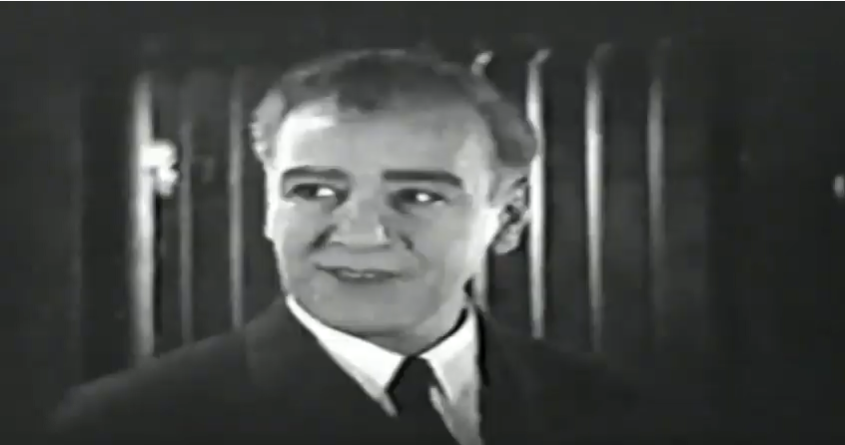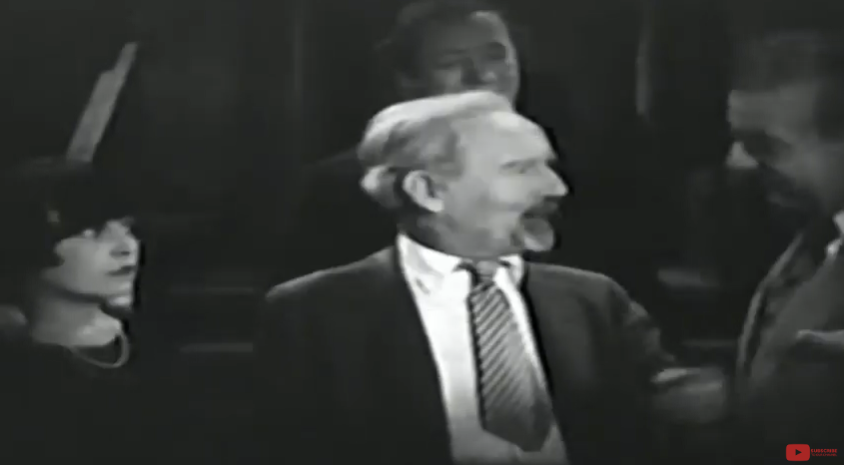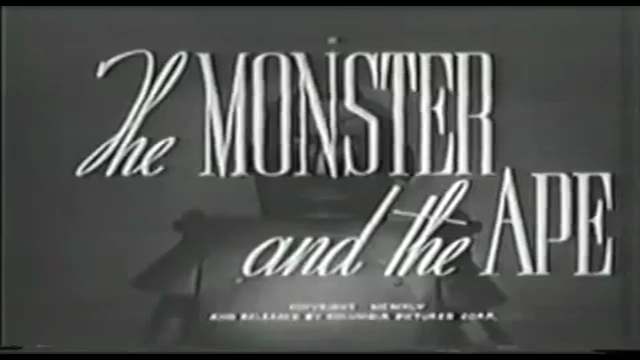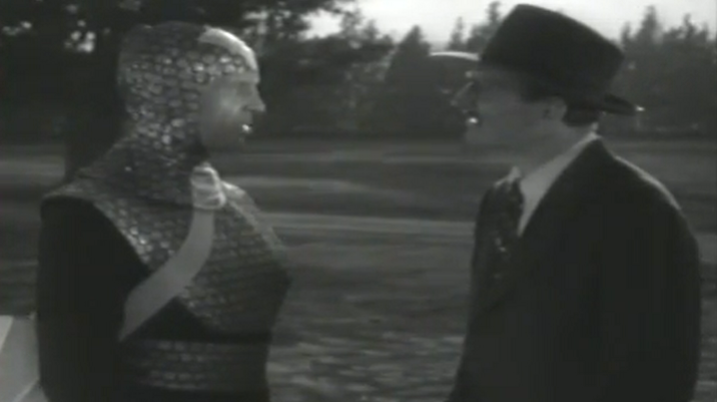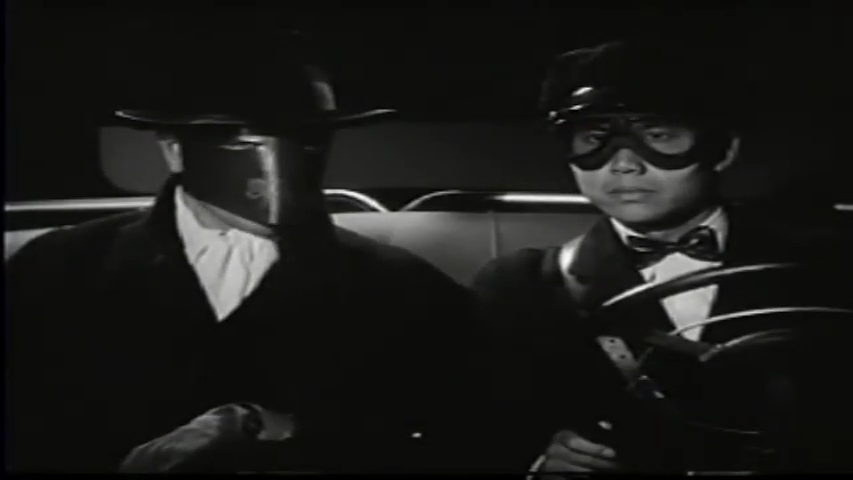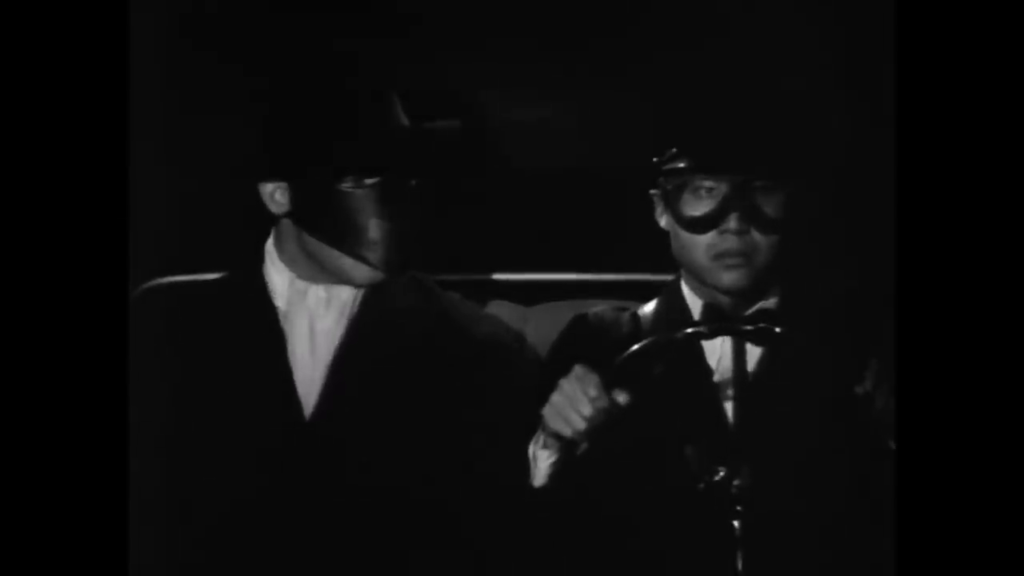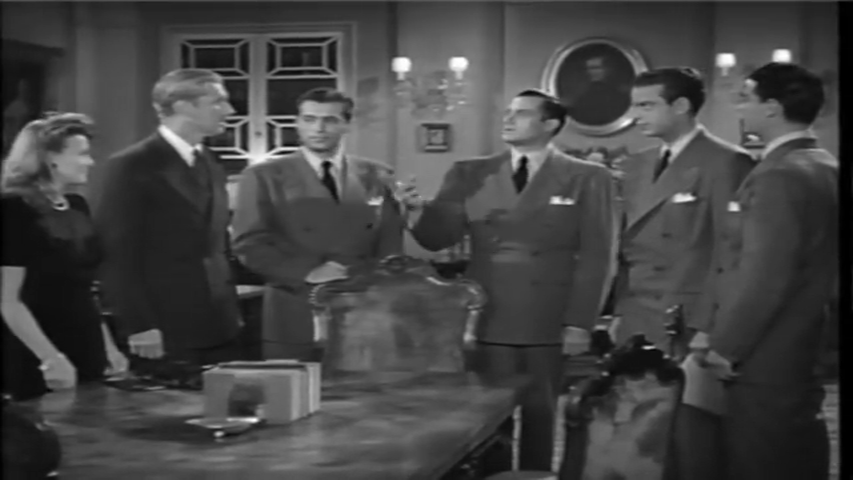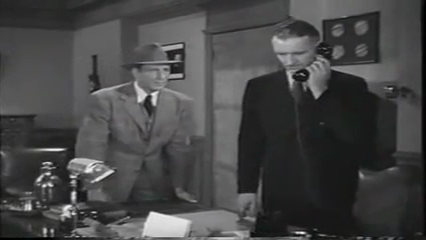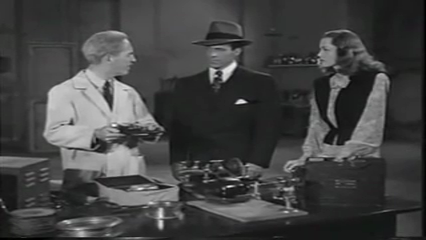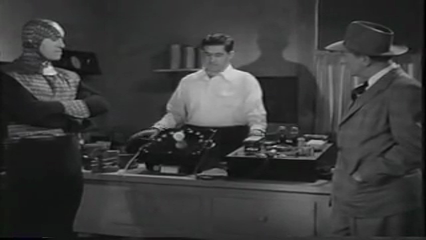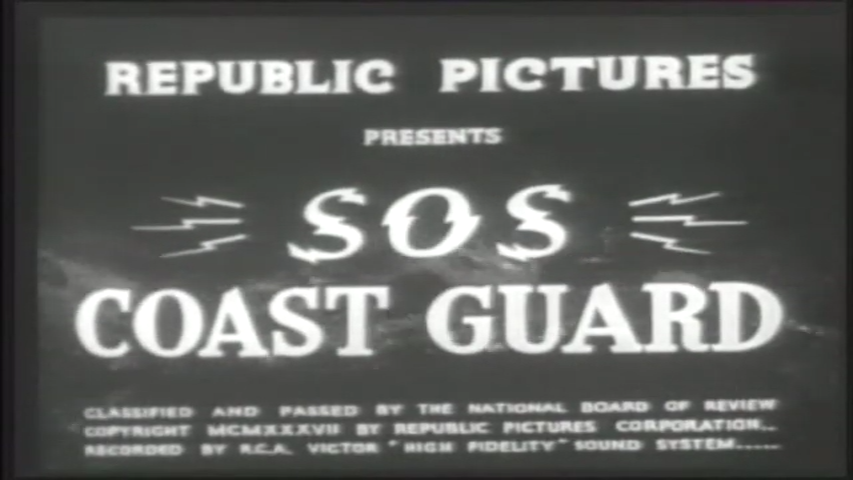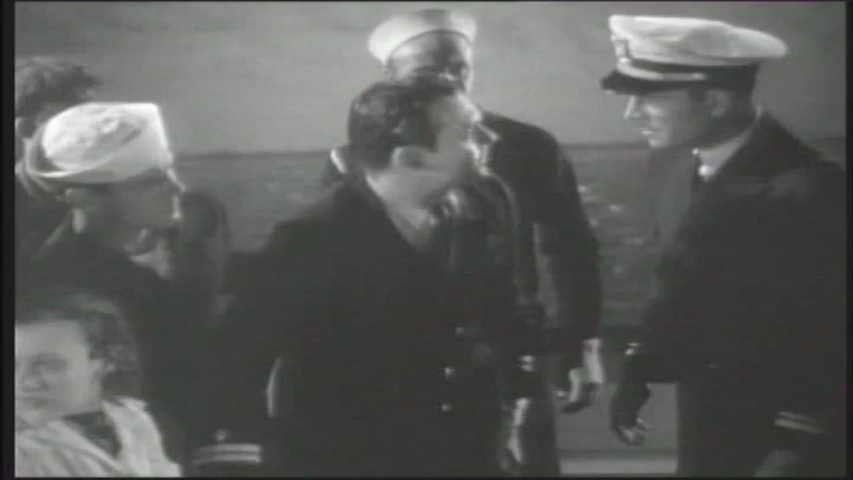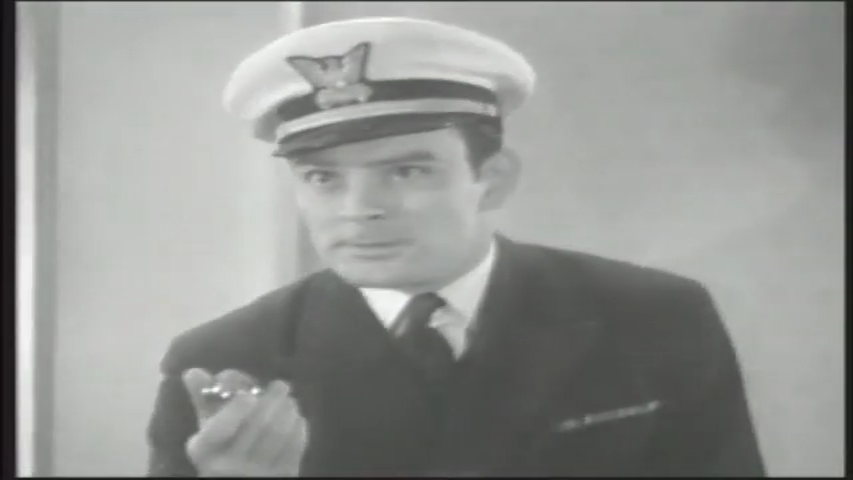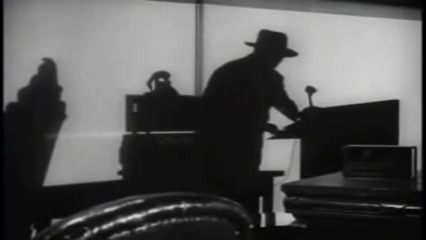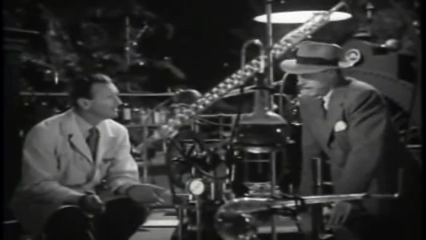-
#404 – The Power God (1925)
The Power God (1925)
Film review #404
Directors: Francis Ford, Ben F. Wilson
SYNOPSIS: Professor Sturgess, with his assistant Jim Thorpe, has invented a machine that can draw infinite power from the air, which will be sure to revolutionise the way energy is produced. However, this invention has drawn the attention of the coal and oil companies, who have agreed that the invention is a threat to their monopolies, and must be destroyed. They hire career criminal Weston Dore to deal with Sturgess, but Dore has other plans to steal the invention for himself and become the new “power God”…
THOUGHTS/ANALYSIS: The Power God is a 1925 movie serial comprised of fifteen chapters, and one of the few serials that has sadly survived from that time. The story opens up with Professor Sturgess and his assistant Jim Thorpe finishing development on a machine described as “the marvel of the radio-electric age,” which can draw power directly from the air, providing a nearly infinite source of energy. This machine has drawn unwanted attention from the traditional energy businesses, who fear the collapse of their industry, hire criminal Weston Dore to get a hold of the machine by any means necessary. When Dore tries to buy the machine from Sturgess with the aim of suppressing it, Sturgess refuses. Dore then has to change plan and has Sturgess killed. With enemies closing in, Thorpe and Strugess’ daughter Aileen have to hide the machine and protect the invention from falling into Dore’s hands, who decides to try and keep the invention for himself to become the new “power God” of the modern world. The story has a familiar setup as with most serials, but this is one of the serials that defined the format for twenty years, and provided a ready-made template for companies like Republic and Universal to pump out similar serials in around a month or so.
At the time it was released, The Power God would have been something many people had not seen before, particularly in the science-fiction genre. Compared to those other serials, The Power God is a strong example of the potential of the format’s storytelling potential. Following Jim asking Professor Sturgess’ approval to marry Aileen and being refused, the two decide to elope and marry in secret. However, a car accident involving her and Dore in another car leads to her losing her memory, and when their rescuers believe Dore to be Aileen’s wife due to the wedding ring they found (which was for Jim), Dore capitalises on this for his schemes and tries to convince Aileen she is his wife while her memory is gone. This is quite a complex situation, and takes up the first few episodes as Jim tries to rescue Aileen and stop her from signing over her Father’s estate to Dore, as well as trying to get her to recover her memory. There’s definitely plenty going on in this story, and each chapter feels a bit different and pushes the story forward, instead of other serials where each chapter is just the foiling of another scheme, a fist fight, and a cliffhanger. The Power God goes through a number of plans and schemes, fleshing them out in depth, and advancing the story in a structured way, as well as introducing new characters that add something new along the way.
The characters themselves are the typical cast of serials: you have the broad-shouldered white male for the lead who does most of the action, a female secondary character who gets captured a lot, a scientist, a criminal villain…they’re all here in some capacity. However, the characters are given plenty of development to make them feel unique. Dore is intent on getting the machine for himself, and his interactions with his calculating wife Carrie give him a bit more of a human dimension. We are also introduced to Carrie’s brother later on, who again changes up the dynamic and keeps things interesting. A mysterious man who aids Thorpe and Aileen from time to time without explaining his motives adds an element of intrigue as to what his role is. He is often just called “the Hindu,” which I’m sure would have been appropriate for the time. He at least is not played by a white actor in ‘blackface,’ but his actor, a native American, does seem to have a bit of makeup on to darken his skin. There are also two black men who are characterised as ‘simple minded,’ which is sadly how every black person on film was depicted in this time. These are certainly problematic, and a product of their time.
The serial is well produced and shot, with plenty of consideration into camera angles and scene-setting. Some of the action scenes, such as on the train near the end, would no doubt taken some effort to pull off. The fight scenes are less well done, and they mostly feel like a chaotic scrap. I don’t think choreography for fight scenes had really been established or developed at the time. The most peculiar aspect of the film for me is the ending: after Dore is stopped and the machine recovered, Aileen and Thorpe realise this machine that will revolutionise how energy is produced will have the consequence of putting thousands of people out of work. In realisation of this, they simply decide to destroy the machine to preserve the status quo. This is a bit of an anti-climax since the viewer will have watched this serial for five hours to see them recover the device, only for it to be willingly destroyed. Also it seems to have the message that invention, science and progress should only be allowed as long as they don’t upset the status quo, or put people in poor working conditions out of a job. The messaging that progress and change is bad does not feel natural, it feels forced and tacked onto the end. It is highly reminiscent of early Soviet cinema where such an ending would be stuck on the end to fit certain propaganda and messaging: the hero would realise his foolishness at independent thought, and would heroically take his place in the system. The example that comes to mind is the Russian film Gold in particular. I wonder if this ending was intentionally made to not upset big business, or they could not figure out any other ending. Either way, it’s not a satisfying payoff, and is rather suspect. Overall though, The Power God is a good serial that has plenty of content, as well as twists and turns that keep things fresh and interesting. The characters are well defined and undergo enough development throughout. There’s some problems around its racial characterisations and the questionable ending, but it certainly provides a template for the format as it was used in the years after it until its demise.
-
#402 – The Monster and the Ape (1945)
The Monster and the Ape (1945)
Film review #402
Director: Howard Bretherton
SYNOPSIS: Professor Arnold at the Bainbridge Research Laboratory have completed construction on a revolutionary new robot called the “Metalogen Man” that they believe will be able to accomplish all manual labour. However, after a demonstration to Professor Ernst and three other colleagues, Ernst arranges the deaths of the other three and steals the robot for himself using a trained ape. Ken Morgan, a representative for the company who ordered the robot, teams up with Professor Arnold and his daughter Babs to stop Ernst and recover the robot, before Ernst can find more of the valuable mineral Metalogen and create an army of unstoppable robots…
THOUGHTS/ANALYSIS: The Monster and the Ape is a 1945 movie serial composed of fifteen chapters. The opening chapter sees Professor Arnold give a demonstration at the Bainbridge research Laboratory to Professor Ernst and three other colleagues of “The Metalogen Man”, a human-like robot that will be able to handle all kinds of manual labour. After the demonstration, Professor Ernst arranges the deaths of his colleagues and steals the robot for himself using a giant trained ape named Thor. Ken Morgan, the representative of the company who was going to buy the robot, arrives but finding the robot has been stolen, teams up with Professor Arnold and his daughter Babs to attempt to recover the robot. The story follows Morgan, Arnold and Babs as they try to thwart Ernst’s various schemes to unearth more of the valuable mineral Metalogen to create more robots. The story follows the usual serial format rules, with a lot of back-and-forth between the heroes and villains as the robot and it’s control unit are stolen and re-stolen throughout the fifteen chapters. There are less action scenes and very few chase scenes in vehicles which are typically a staple of the format. The cliffhangers are fairly varied and contain some elaborate traps, but you know how they’re going to end up most of the time.
The “monster” and the “ape” of the title are the robot and Thor. The robot is controlled by a control unit and looks fairly strong and menacing, with its light up eyes and bulky body. Thor is brought out of the zoo by its trainer to carry out the orders of Professor Ernst, and handles jobs such as carrying the robot, which is too heavy for any person to lift. Thor himself is played by Hollywood stuntman Ray Corrigan, who owned the ape-suit and would rent himself and the suit out to movies that required it, and he does a convincing job with it. However, we don’t see nearly enough of the two of them, and most of the action doesn’t involve them. The worst part is we never get to see the two of them fight one another, which is a hugely missed opportunity (and being shown on the posters). Thor dies by being shot in the thirteenth chapter, which is a hugely underwhelming end for the titular character. The rest of the characters follow the usual format, with the lead male doing the action and fight scenes, the sole female character who acts as an assistant or secretary, and the ‘good’ scientist who helps them. There’s also Flash, who plays a comic relief character (I’m not sure what his role in the laboratory actually is), and is played by a non-white actor, which is very rare in 1945. He is played as having a low intelligence and being a coward, which results in him being very much a racist caricature, and is quite problematic to say the least. Professor Ernst as the villain has plenty of schemes, and while he has no special powers, inventions, nor is he hidden behind a disguise like many serial villains, he still has quite an aura of menace about him.
Overall, The Monster and the Ape is a typical serial adventure with few stand outs. It has some elaborate cliffhangers and scenarios that replace the well-worn vehicle chases of other serials, but it’s titular “monsters” are vastly under-utilised, and you can’t help feel a little disappointed with the potential of a robot versus an ape, and what we actually get, which is the sparse use of both and the lack of any confrontation between them.
-
#398 – Flying Disc Man from Mars (1950)
Flying Disc Man from Mars (1950)
Film review #398
Director: Fred C. Brannon
SYNOPSIS: Scientist Dr. Bryant goes to investigate a strange aircraft that has has crashed to Earth. There, he finds that a Man named Mato who has come from Mars with the aim of placing the Earth under Mars’ absolute dictatorship. He blackmails Dr. Bryant in this scheme, knowing about his secret past as a Nazi scientist during the war, into using his scientific knowledge and resources to construct weapons to achieve this task. Meanwhile, Kent Fowler, who owns a security company that uses planes, and who was also hired by Bryant to act as security around his factory before the ship crashed, must find a way to the criminal’s plans to steal the components necessary to build atomic weaponry.
THOUGHTS/ANALYSIS: Flying Disc Man from Mars is a 1950 movie serial composed of twelve chapters. The first chapter opens up strongly (as they all do in order to get viewers into the theatre and subsequently back for the remaining chapters), as Dr. Bryant, a scientist and owner of a manufacturing company, hires Kent Fowler, the owner of security company that patrols in a fleet of aeroplanes, to patrol the grounds of his factory, as there have been sightings of strange ships in the sky recently. Bryant sees a ship fall out of the sky and crash nearby, prompting him to go and investigate. When he arrives, he finds a man emerge from the plane called Mato, who claims to be from Mars and has been sent on a mission to conquer Earth to be ruled by the Mars dictatorship, as the Earth’s experimentation with atomic weapons has been found too dangerous to continue, and would have severe repercussions on the solar system. Mato knows about Dr. Bryant’s past of being a Nazi scientist during the war (having intercepted radio communications from Mars), and blackmails him into helping him conquer the earth (and appealing to his inner Nazi by explaining how reasonable it would be to have the use of atomic weapons controlled by an absolute dictatorship I guess).
-
#396 – The Green Hornet Strikes Again! (1940)
The Green Hornet Strikes Again! (1940)
Film review #396
Directors: Ford Beebe, John Rawlins
SYNOPSIS: The Green Hornet, a masked vigilante is once again on the case of a racketeering ring that is terrorising the city and undermining the country’s military productions. Britt Reid, the owner of The Sentinel newspaper, investigates these racketeering rings, and disguised as the Green Hornet puts a stop to their operations, all the while having to avoid his secret identity being uncovered by his friends and co-workers…
THOUGHTS/ANALYSIS: The Green Hornet Strikes Again! is a 1940 movie serial based on the The Green Hornet radio drama and a sequel to the movie serial of the same name. The story once again centres around Britt Reid, the owner of The Sentinel newspaper, who is also secretly the masked vigilante “The Green Hornet.” While Reid investigates the crime rackets in the city at the newspaper, as The Green Hornet he puts a stop to them with the information he has received through his investigations. This only really needs to be a short review, as most of what can be said about this serial was already said in my review of its predecessor. The story is very similar with The Green Hornet once again going after racketeering operations, with a new one being the focus of nearly every episode, which means there’s a bit of variety to the plot. This does make the serial stand out from others in the format since most of them have once overarching plot, linking the chapters by cliffhanger endings which are directly resolved at the beginning of the next chapter. Although The Green Hornet Strikes Again! somewhat does this, the cliffhangers don’t have a similar impact, and mostly just wrap things up before moving on to a new story. The overarching plot concerning the crime syndicate is a bit more substantial than the previous serial, with an overall villain controlling things, but it’s not a massive change. Nevertheless, there’s plenty of action with The Green Hornet, and intrigue with Reid’s investigations, so it manages to switch things up to keep them interesting. It should also be noted that is one of the longest serials, clocking in at nearly five hours and fifteen chapters, so that variety comes in handy.
Being released less than a year after the original, this sequel manages to return all the sets and cast as if it was almost a direct continuation. Everyone has a specific role to play, from the heroic Reid, his driver Kato, Michael Axford being the comic relief, and so on. The acting isn’t too bad, but again like its predecessor, the dialogue feels very stiff and unnatural at some points, like the actors are just reciting lines without any natural pacing or emotion. The movie serial format is known for sticking to the tropes of its format, and The Green Hornet Strikes Back! is no exception. However, it is sticking to the formula of its predecessor, which deviated from the format in having more stand-alone episodes rather than dragging out one overarching story. With this in mind it is still a good example of the format, with interesting characters, good action and intriguing investigations that have a decent amount of entertainment value.
-
#394 – The Green Hornet (1940)
The Green Hornet (1940)
Film review #394
Director: Ford Beebe, Ray Taylor
SYNOPSIS: A racketeering gang is causing all sorts of crimes across the city. Meanwhile, the owner of The Sentinel newspaper Britt Reid, upon learning of these criminal activities, has decided to fight back in disguise as The Green Hornet, accompanied by his valet Kato and their super fast car, they attempt to shut down the criminal rackets all the while trying to avoid having their identities uncovered by their friends at The Sentinel…
THOUGHTS/ANALYSIS: The Green Hornet is a 1940 movie serial based on the radio series of the same name. The story opens up showing a crime racket running amok in a city, with The Sentinel newspaper trying to chase down the stories behind their criminal activities. Britt Reid, the head of the newspaper, decides it is time for someone to deal with these criminals, and he dons the disguise of “The Green Hornet,” a masked vigilante who visits these criminals and tries to uncover who is leading the rackets. The plot unfolds over the thirteen serial chapters, with each chapter introducing a new racket that The Green Hornet must confront. With each chapter introducing something new, there’s enough variety to keep viewers returning and engaged with the story. There’s the usual high-speed chases and fist fights you would expect, and these are executed pretty well. Maybe nothing too memorable, but still entertaining enough to watch.
The character of Britt Reid and his alter-ego as the Green Hornet play a typical superhero role, with no-one knowing he is leading this double life. As such, this leads to many of his friends and colleagues at The Sentinel newspaper wondering whether The Green Hornet is a hero or villain, and in some cases working to apprehend him, which leads to some complications and interesting turns in the story. The only person who knows his identity is Britt’s valet Kato, who drives The Green Hornet’s car, which is a super speedy vehicle that makes a buzzing sound akin to a hornet. Kato stands out as a character as he is actually portrayed by an Asian actor, whereas a lot of the time Asian characters were portrayed by white actors in makeup to “look” Asian. Also of note is that when the serial was released in 1940, the U.S. had not entered world war two, although anti-Japanese sentiment was still growing, leading to Kato’s original origin being Japanese being changed to Korean for the serial (Keke Luke, the actor himself, was Chinese-American). Nevertheless, it is very rare to see a non-white person in a leading role at this time. Other characters include the one token female character, who works at The Sentinel and believes throughout that The Green Hornet is a force for good in spite of her colleagues believing otherwise. Also Britt’s bodyguard plays a bit of a comic relief character, and his being Irish leads to some stereotypical phrases that come out of his mouth. The villains don’t really have much of an impact as characters themselves, as they mostly change with each chapter and the new racket that the Green Hornet must thwart, but that’s not too much of a problem, as the protagonists are much more interesting.
Overall, The Green Hornet is a good example of the serial format. There’s plenty of action, the characters are interesting, and there’s enough variety to keep viewers entertained. It is also a good example of an early superhero-esque character who leads a double life and must balance the two roles.
-
#393 – The Masked Marvel (1943)
The Masked Marvel (1943)
Film review #393
Director: Spencer Gordon Bennet
SYNOPSIS: Warren Hamilton and Martin Crane hire The Masked Marvel to stop Mura Sakima, the head of a criminal organisation who is sabotaging projects for the war effort. When Hamilton is murdered by one of Sakima’s henchman, The Masked Marvel hires a group of investigators to help stop Sakima before he can destroy any more of America’s military technology…
THOUGHTS/ANALYSIS: The Masked Marvel is a 1943 movie serial. The serial starts off with explosions. Lots of explosions. As various installations are blown up, the insurance company that insures them is having to pay up. Suspecting the Japanese spy Mura Sakima behind these attacks,, the chief executives Warren Hamilton and Martin Crane hire The Masked Marvel to find and stop Sakima. When Hamilton is murdered by one of Sakima’s henchman, The Masked Marvel hires four investigators to help with stopping Sakima, and along with Hamilton’s daughter Alice, they try to hunt Sakima down. The story is fairly standard, but executed quite well: there is a variety of action sequences with some well executed stunts. The serial takes place during World War II, and so the danger of the story having an impact on the war adds to the drama. Sakima as a Japanese spy also reflects this, as the Japanese were seen to be the U.S.’s main enemy. Unfortunately, this being 1943 means that Sakima is played by a white actor who is made to “look” Japanese with all the typical stereotypes you would expect (This is not without precedent, The Batman serial the same year also does this). This really does make the serial feel very dated.
One of the more novel twists on the format is that instead of the main villain being one of the ‘good guys’ in disguise with their identity concealed until the end, this time The Masked Marvel’s identity is the one that is hidden, the only clue being he is one of the four investigators that the Masked Marvel himself hired. This is a refreshing change on one of the staples of the format, although not entirely without precedent (the same idea was used in The Lone Ranger serial a few years earlier). The identity of the Masked marvel doesn’t really have much of an impact on the plot, but it’s a bit of extra fun trying to guess who he is. You may think that it would be easy to determine who the Marvel is, as he only wears half a face mask, but each of the four investigators wear the exact same suit, and the masked marvel puts on a different voice so there really is no way to determine who he is (his voice is dubbed over by a different person altogether). The body type also doesn’t help because whenever the Masked Marvel is on screen, he is played by stuntman Tom Steele. As the serial progresses, two of the investigators die so it slowly narrows down the suspects, which is again unusual for a serial to have such developments that impact on the story as a whole. Martin Crane takes a more typical role of being part of the protagonist’s team who is secretly working for Sakima without being discovered until the very end. Overall it’s a mixed bag of the usual tropes with a few twists to set itself apart.
One of the strongest points of the film is the stunts. As mentioned, the professional stuntman Tom Steele plays The Masked Marvel and gets into some pretty energetic fight scenes as he flies across sets and tackles various henchmen. It’s a shame his name doesn’t appear anywhere on the credits, as he does a great job. The cinematography also offers some interesting angles that add some dramatic flair to some scenes. There’s some bad as well, especially with the dummies that are used whenever someone ‘falls’ off a building or a cliff. In one of the cliffhangers, one of them falls from a building and you can clearly see its arm rip off as it hits the building on the way down, which is pretty funny. Given the quick turn-around for these serials (around three weeks from the start of filming to completion), any mistakes made were generally not re-shot because of the tight schedule. Overall, The Masked Marvel is a good serial that mixes things up slightly in terms of story, and also delivers high energy action. However, some dodgy effects and racial stereotyping hold the serial back and make it quite dated.
-
#392 – The Purple Monster Strikes (1945)
The Purple Monster Strikes (1945)
Film review #392
Directors: Spencer Benet, Fred Bannon
SYNOPSIS: A rocket ship from the planet Mars makes a landing on Earth, and the astronomer Professor Layton goes to investigate. he finds a man from Mars as the only passenger on the ship and takes him to his observatory, where he learns the man is actually the first part of an invasion force come to conquer the Earth. After killing Layton, he has the ability to possess his dead body and attempt to get his prototype rocket ship design finish so he can use it to return to Mars and lead the invasion. The only person that can stop him is Layton’s assistant Craig Foster, accompanied by Layton’s niece Sheila.
THOUGHTS/ANALYSIS: The Purple Monster Strikes is a 1945 movie serial. The opening chapter sees a rocket ship crashing to Earth and Professor Layton going to the impact site. There he finds a man from Mars who it turns out to be the first of an invasion force sent to conquer the Earth. The Martian kills Layton and through the use of gas from the Martian atmosphere, is able to possess Layton’s dead body whenever he wants, which he does in order to get Layton’s rocket ship prototype finished, which is the final key to the invasion, as the Martian rocket ships are unable to return to Mars. Learning of the plans of the “Purple Monster”, Layton’s assistant Craig Foster and Layton’s niece Sheila must find a way to foil the Purple Monster’s plan to steal the rocket ship plans. The story unfolds in keeping with almost every other film in the serial format, with each chapter presenting a new scheme from the Purple Monster and Craig and Sheila attempting to foil it. The ability of the Purple Monster to possess Professor Layton’s dead body is a little dark, but it keeps it family-friendly by not dwelling on the details too much. The back-and-forth between the Purple Monster and Layton also adds an interesting dynamic between the characters. The cliffhangers at the end of each chapter are quite ambitious too, and full of high speed chases and explosions. You always know that they’ll result in someone escaping death at the last second, but it still puts some effort into pulling it off.
The characters themselves are a pretty dull bunch. The usual archetypes are all here: the main young white cowboy-esque hero, the token woman, the scientist, the mysterious villain and his henchman: there is nothing inspiring about any of them. We sometimes see the Martian emperor being contacted by the Purple Monster, and his assistant shows up near the end, but neither of them really offer anything exciting or interesting. The whole business with the Purple Monster being able to possess Layton really ties in with one of the main tropes of these serials of the enemy spy hiding in plain sight, and who could be anyone, which really ties into the paranoia around enemy spies in the U.S. during wartime. Other than that though, the cast is rather forgettable.
Overall, while The Purple Monster Strikes has some good special effects and fast-paced action scenes, its characters are dull and bland, and fail to stand out in the format. I think it sits comfortably in the middle of these serials: nothing special, but nothing catastrophically bad either. Being directed by two of the most prolific serial directors, Spencer Bennet and Fred Bannon, they certainly knew what they are doing, but they’re obviously doing it to create a stable source of income rather than trying to innovate at this point into the format’s history.
-
#390 – S.O.S. Coast Guard (1937)
S.O.S. Coast Guard (1937)
Film review #390
SYNOPSIS: The renegade scientist Boroff has invented a disintegrator gas that unsurprisingly disintegrates everything around it when released. Boroff’s ship gets in trouble at sea, leading the coast guard to mount a rescue. However, he is recognised by some reporters along for the ride as a wanted criminal and they give chase as Boroff tries to escape. When one of the coast guards is killed as Boroff escapes, his brother Lt. Terry Kent, also a member of the coast guard, swears revenge and he and the reporters Jean Norton and Snapper McGee attempt to unravel the mystery surrounding Boroff and to put a stop to his evil schemes.
THOUGHTS/ANALYSIS: S.O.S. Coast Guard is a 1937 movie serial by Republic Pictures. The serial starts off with a ship in distress off the coast and the coast guard being deployed. Jean Norman, a newspaper reporter and Snappy McGee, a photographer for the newspaper, recognise the man rescued from the ship as Boroff, a wanted scientist who has been developing deadly weapons to sell to foreign powers. The coast guard give chase, which ends up in the death of one of them, Ensign Jim Kent. His brother, Lt. Terry Kent, who is also a member of the coast guard, swears revenge, and attempts to track down Boroff with the help of Jane and Snapper. The serial unfolds very much like every other serial, so there shouldn’t be no surprise with the cliffhangers, chases and fist fights that fill the chapters. The setting of the coast guard does make it stand out a little, with the scenes at sea and on the ships being well executed. There’s enough variety and a tangible thread of story all the way throughout to make it a watchable serial, but again the format does show its age, and if you’ve seen one you’ve more or less seen them all. The format meant that a lot of content could be produced quickly and at a small cost, but nothing original or innovative was attempted outside of those original constraints.
The characters are one of the noteworthy aspects of the serial, with some recognisable faces amongst the cast. The character themselves are pretty typical: you have the young, courageous American male for the lead, one female character, a mad scientist villain, and a comic relief character. Lt. Terry Kent is the typical lead, this time played by Ralph Byrd, who would be recognisable from the successful Dick Tracy serial that was released earlier in the same year. His character wears a hat most of the time so he distinguishes himself from Tracy enough that you wouldn’t be distracted by the similarities, but Byrd’s appearance in this serial definitely rides the success that Dick Tracy had. The villain is played by famous horror actor Bela Lugosi, who is not in a horror film role because of the ban on making horror movies that was put into effect between 1936 and 1938. The name of his character Boroff is more than likely a reference to fellow horror movie actor and Lugosi’s somewhat rival Boris Karloff. The character of Snappy McGee is very similar to the character of Mike McGurk in the Dick Tracy serial, and I was quite surprised to see it wasn’t the same actor, as they are very similar in terms of looks and mannerisms. Jean Norman’s actress Maxine Doyle also went on to marry the director of this serial (William Witney), so all round an interesting bit of trivia from the casting, even though their characters aren’t as stand-out.
Being set at sea for a decent amount of the runtime, there’s a lot of scenes on the ocean which are all executed fairly well. In the opening chapter we see Boroff’s ship the Carfax caught in a storm, and the set definitely looks like a boat in a storm, with huge waves soaking the set and the actors. There’s some decent effects and props which also breathe some life into the predictable storyline. While setting a serial in the coast guards might not sound as thrilling as a Flash Gordon serial or the like, it still manages a decent story with a good cast. If you liked the Dick Tracy serial, no doubt you would have sought this serial out as well.
-
#389 – Radar Men from the Moon (1952)
Radar Men from the Moon (1952)
Film review #389
Director: Fred C. Brannon
SYNOPSIS: After a series of devastating attacks across the planet, Commando Cody is assigned to travel to the moon in a rocket ship to investigate the theory that the attacks are being launched from there. While there, he finds that the ruler of the moon Retick has been ordering the attacks in order to pave the way for a full scale invasion of Earth, and only Commando Cody and his friends can stop it…
THOUGHTS/ANALYSIS: Radar Men from the Moon is a 1952 movie serial comprised of twelve chapters. The first chapter opens showing aerial attacks across the globe, destroying vital infrastructure. Commando Cody and his friends are visited by a government official who believes that the attacks are originating from the moon. Cody has also come to the same conclusion and coincidentally his friend ted has just finished building a rocketship that can fly to the moon. Cody and his friends travel to the moon to investigate, where they find the leader of the moon, Retik, has ordered the attacks to prepare for a full-scale invasion as the moon’s atmosphere is evaporating and making it uninhabitable. Cody manages to steal one of their ray guns and take it back to Earth, while one of the Moon’s inhabitants, Korg, who is stationed on Earth, tries to get the ray gun back and stop Cody along with his hired goons. The fundamentals of the story have been done in many serials before (Flash Gordon, Brick Bradford etc.) so it’s nothing really original, and it’s got all the usual action scenes, chases, cliffhangers and the like. I’ve reviewed so many of these serials now they all somewhat blend into one, and it takes something special to draw my attention. As I have mentioned before, this is the sort of thing you could get away with at the time, as there was no home media or way to rewatch them, and as these are mostly aimed at a younger audience, they may not have seen the older ones, so it was easy to get away with it. With the onset of television at this time though, people could start watching this serial format at home rather than going to the theatre every week, so serials would become less and less popular, although not too many people would have televisions, so the serial format had a few years of life yet. By this time though, the tropes of the format had been well and truely done to death.
This serial is the first to feature Commando Cody, who would have another serial a year later. The flying rocket suit he uses however, was featured in the 1949 serial King of the Rocket Men. There’s no continuity between the two, but as mentioned the younger audience would probably not have watched the previous serial, but may recognise the imagery, as it was quite a unique suit, and the flying mechanics and effects were something new. Radar Men from the Moon re-uses a lot of the rocket suit footage from that film of him flying through the air and such, which again it could be gotten away with at the time. The rest of the characters are the usual cast for the format: one female, a sidekick, the villainous henchman and the alien leaders dressed in bizarre clothing so you know they are alien. There’s some interesting props and sets when the cast are on the moon, with vehicles and underground bases, but that’s the only thing that really stands out. Overall, Radar Men from the Moon is just another standard sci-fi serial. Nothing horrifically bad about it, but nothing to set it apart from all the others that do the exact same thing. Just another one for the pile I guess.
-
#388 – King of the Rocket Men (1949)
King of the Rocket Men (1949)
Film review #388
Director: Fred C. Brannon
SYNOPSIS: A man calling himself Dr. Vulcan is killing off prominent scientists. After one such scientist, Dr. Millard manages to escape an attempt on his life, he goes into hiding and develops a rocket suit that allows the wearer to fly through the skies. He enlists fellow scientist Jeff King to wear the rocket suit and thwart Dr. Vulcan’s schemes.
THOUGHTS/ANALYSIS: King of the Rocket Men is a 1949 sci-fi serial. The story opens up with the mysterious Dr. Vulcan killing off members of the Science Associates, a group of top scientists. One such member, Dr. Millard, manages to escape one of Vulcan’s traps and goes into hiding, leading Vulcan to believe he is dead. While in hiding, Millard completes his invention of a rocket suit that allows the wearer to fly thanks to a jet pack. Millard enlists the help of Jeff King, another member of Science Associates to wear the suit and track down Dr. Vulcan. The story involves the usual serial tropes, with Dr. Vulcan’s true identity being hidden throughout the serial until the end, and with King figuring out the Vulcan is actually one of the members of Science Associates, he has to work out which one it is, which again is a familiar set-up for these serials. Some of the chapters provide a bit of variety, such as the one where King’s ally Ted suspecting King to be Vulcan and vice versa, which leads to an interesting confrontation, and one which I have not seen before in the serial format, but other than that its the usual back-and-forth between heroes and villains chasing each other down with various plans and traps.
The highlight of this serial has got to be the rocket suit, which allows King (and sometimes Millard) to fly through the air. This is the first serial of three to use the rocket suit, but the only to refer to the hero as “rocket man”. The other two, Radar Men from the Moon and Zombies of the Stratosphere, are all unconnected from one another, and do not give the masked hero a name. Since this serial like most is aimed at getting young viewers into the theatre each week for the next chapter, the rocket suit would definitely have been a hit with them, as there really wasn’t anything like it when it came out. Older viewers would perhaps have been less than engaged with all the usual tropes being wheeled out, but the serial isn’t really for them. There’s plenty of other inventions shown throughout the serial which are interesting enough to change up the pacing, but ultimately it does rely on the tried and tested serial elements.
The end of the film also deserves note, as in some sense the villain wins. Dr. Vulcan steals a device known as the Decimator, and uses it on a tectonic fault-line, causing a huge tidal wave that essentially destroys Manhattan. The footage of the tidal wave is taken from the 1931 film Deluge, in which a rising of sea levels causes most of the world’s population to be wiped out. The destruction looks good and devastating, and it still holds up despite being made nearly twenty years earlier, but obviously if you’ve seen it before it lessens its impact being used a second time here. Nevertheless, it’s very unlikely viewers of this serial would have seen it being used in Deluge due to the time elapsed and there being no re-runs or home releases back then. King manages to eventually stop Dr. Vulcan, but after New York City has been destroyed, and the serial ends with the ambiguous promise to rebuild New York ‘better than ever’. Not exactly a solid resolution, but these serial never are after investing nearly three hours watching them. King of the Rocket Men was released in 1949, after the serial format had peaked, but there were still some good ones being released (most notably the Superman serials, which were quite popular, and some of the best examples of the format). “Rocket man” is somewhat a superhero, with his flying ability and masked persona, and this no doubt would have made the serial stand out, but a lot of the other elements of the serial are pretty standard for the format. Overall it’s a little more interesting than the average serial, but not outstanding.



